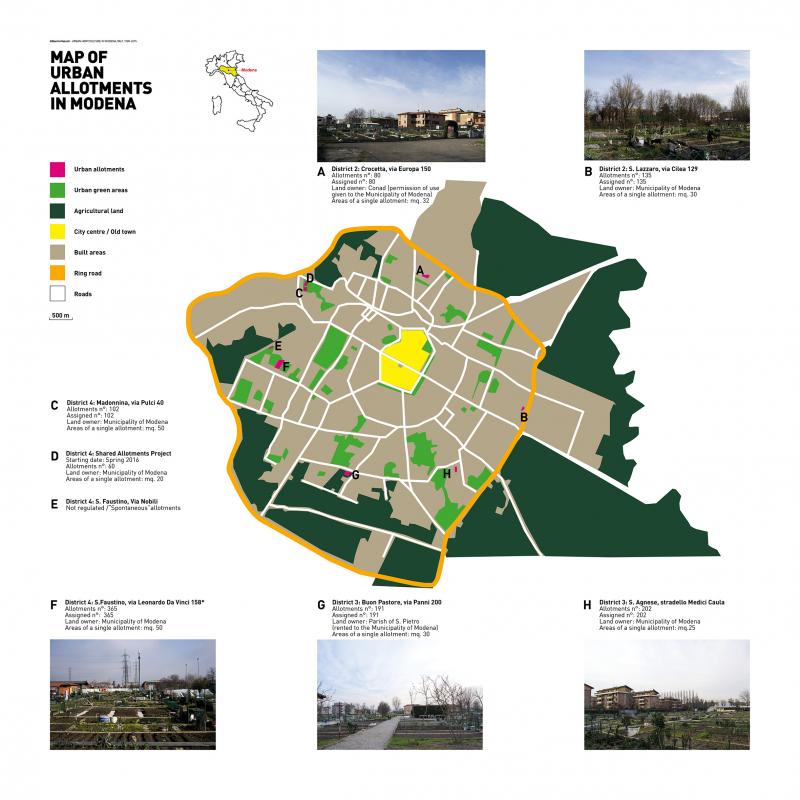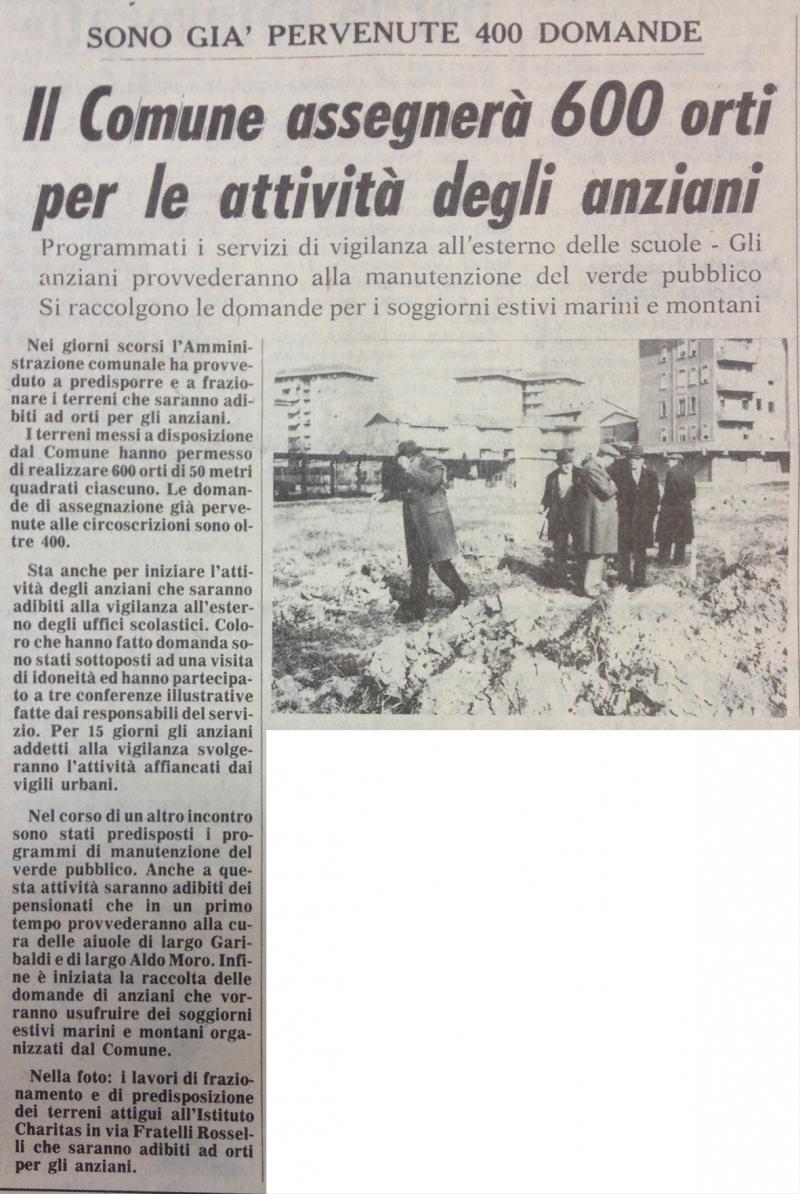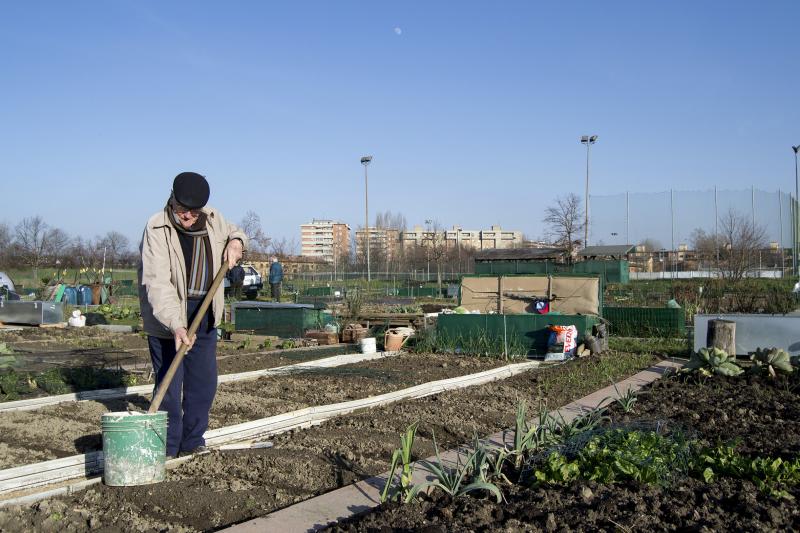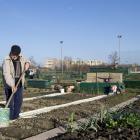Modena, a city located in Emilia-Romagna in the north of Italy (184,973 inhabitants according to the 2015 census), may represent a case study of the spread of Italian urban horticulture in the second half of the twentieth century: in fact, in 1980 it became the first Italian city to introduce a law recognizing the social and economic role that urban allotments played.
The history of Italian urban allotment gardens dates back as far as the beginning of the twentieth century, mostly in the north of the country. Nevertheless, during the Second World War the number of allotments rose dramatically in almost every city, since nearly all the communal garden areas and public parks were given over to cultivation. These “war gardens” were a crucial support to many families, deeply impoverished by the war.
Modena, like many other Italian cities, was damaged during the Second World War and in need of restoration in the aftermath. However, the plan for urban reconstruction, devised by the architect Mario Alberto Pucci in February 1947, prevented the complete urbanization of several green areas in the city center. Recognising the important social function that urban green areas have in the city, the city council of Modena has consistently preserved these spaces in the urban planning measures they have taken in the subsequent decades.
The postwar industrialization of the 1950s prompted a massive reorganization of the Italian population. People migrated from mountains to plains, from South to North, from rural areas to cities and towns. In 1946, Modena had 105,437 inhabitants, a figure that grew steadily in the following 40 years. Most of the people that arrived in the cities came from rural places, where they had been living in close contact with their land, and therefore they were used to growing their food. Many of them tried to keep this practice alive after moving to the city, not only in their own backyards, but in public green areas as well. Those allotments were often unlicensed or spontaneous, like the ones in Milan and Turin, or managed by private companies, such as ENI (Ente Nazionale Idrocarburi), the national oil company, that allowed the employees of its factory in San Donato Milanese to use an area near the river Lambro to grow their food. The practice of horticulture was regarded as a necessity for many migrants, an act of resilience in the face of the urban life these previously rural people were now forced to experience. Moreover, urban gardens are places where different visions of nature, methods of cultivation, and botanical species are constantly shared and mixed.
A study on the state of urban gardening in Italy, conducted in 1982 by the association Italia Nostra, reported that Modena stands out as a peculiar case in comparison with other Italian cities. On 10 March 1980, the city council of Modena passed a law that considered allotments “as part of the intervention program for the elderly, which aims to keep individuals in their social and family environment and foster employment activities as a stimulus to the participation in the various moments of collective life.” Thirty thousand square meters of suburban land in four different districts of the city were designated to host six hundred allotments of 50 square meters each (further divided into two parts of 25 square meters each). The allotments remained the property of the municipality, which assigned them to retired people, generally but not exclusively aged over 55. These areas are provided with a toolshed and access to water, and it is forbidden to build any other structure on a plot. Each district area council may exceptionally decide to assign an allotment to someone under the age of 55, as long as they consider the practice of horticulture helpful to the person’s social development. The garden is not transferable and cannot be rented out; it must be cultivated by the assignee or by their family members.
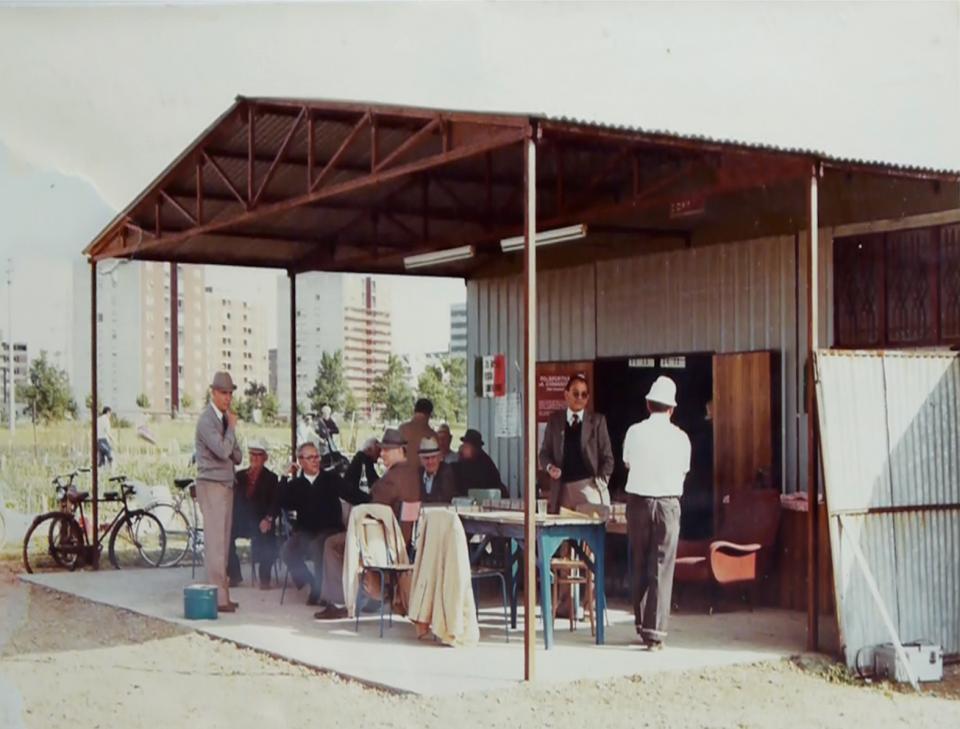
This image was taken from the archive of ANCeSCAO (Associazione Nazionale Centri Sociali, Comitati Anziani e Orti—National Association of Eldelry Committee and Social Allotments) and shows the social allotments in S. Faustino, Modena (shown on the map as area F). This urban allotment site is the largest in the city, and the oldest: here, allotments were established even before the 1980 law. The picture above is from 1978.
This image was taken from the archive of ANCeSCAO (Associazione Nazionale Centri Sociali, Comitati Anziani e Orti—National Association of Eldelry Committee and Social Allotments) and shows the social allotments in S. Faustino, Modena (shown on the map as area F). This urban allotment site is the largest in the city, and the oldest: here, allotments were established even before the 1980 law. The picture above is from 1978.
Photo courtesy of the ANCeSCAO archives, Modena.
This work is used by permission of the copyright holder.
The Italian General Confederation of Labour (Confederazione Generale Italiane del Lavoro, or CGIL), the largest Italian trade union, played a pivotal role in the passing of the 1980 law: the secretary of the Modena branch in the late 1970s worked closely with the municipality of Modena to explore the possibilities of a written law for urban allotments. This collaboration ultimately led to the transformation of the district Elderly Committees into Allotments Committees, able to benefit from the new allotment law.
Ten years later, on 12 March 1990, ANCeSCAO (Associazione Nazionale Centri Sociali, Comitati Anziani e Orti—National Association for Social Centers, Elderly Committees, and Allotments) was established in Bologna with the aim of coordinating allotment sites on a national level.
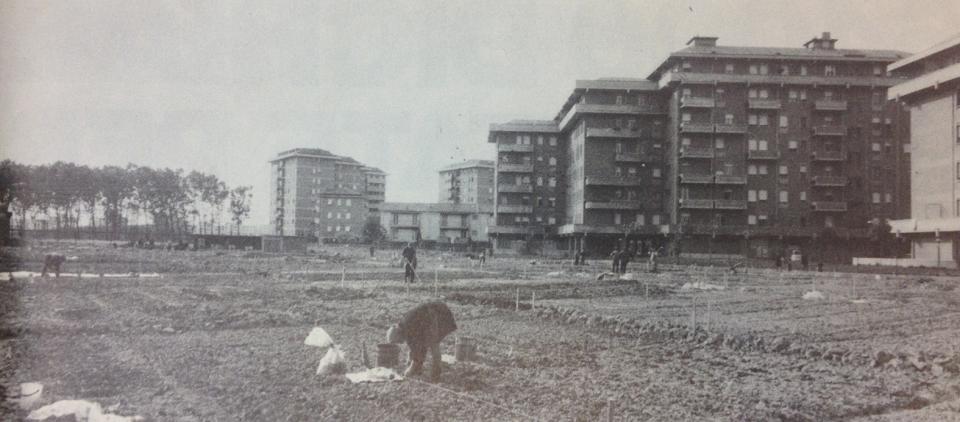
This allotment site was moved in the late 1990s by just a few hundred meters (it is now in area G), since the municipality designated this area for development. This picture is taken from the March 1980 issue of a monthly magazine called Comune di Modena.
This allotment site was moved in the late 1990s by just a few hundred meters (it is now in area G), since the municipality designated this area for development. This picture is taken from the March 1980 issue of a monthly magazine called Comune di Modena.
Photo courtesy of the Library Estense, Modena.
This work is used by permission of the copyright holder.
In 2001, a new law implemented by the municipality of Modena expanded the horticultural areas of the city, which now comprised 1,164 allotments. As a result, an Elderly Committee (as part of ANCeSCAO) is appointed for every district in order to manage the allotments: every year in November, the committee assigns the allotments according to the order in which they are requested. Elections for the committee president are held every two years. A yearly fee is requested from each member in order to cover management costs, such as manure, seeds, furniture, etc.
A new law passed in July 2015 allows people under 55 years of age to ask for an urban garden. Sixty allotments, each 20 square meters in size, are now available in District 4 of the city. This new law, which does not affect the previous one, is the result of the collaboration between the association OrtiCondivisi (shared cultivated gardens) and the welfare office of the municipality of Modena. OrtiCondivisi was founded in 2012 by private citizens with the purpose of “promoting access to land, the creation and management of community orchards and gardens (using only certified organic seeds and fertilizers with no chemicals) for all, without any distinction on the basis of gender, age, nationality, or any other basis.” The new law refers to “urban public allotments” to be assigned for three years to individuals and families that are able to cultivate them (but do not have any other possibility to grow food), and to some non-profit associations that have operated in the area of Modena for at least three years. The first allotments were assigned under this law in the autumn of 2016. The municipality might also decide to earmark some allotments for educational and social projects, jointly with schools and psychiatric and rehabilitation centres.
How to cite
Mazzoli, Gilberto. “Urban Horticulture in Modena, Italy, 1980–2015.” Environment & Society Portal, Arcadia (Summer 2017), no. 11. Rachel Carson Center for Environment and Society. https://doi.org/10.5282/rcc/7749.
ISSN 2199-3408
Environment & Society Portal, Arcadia
 This work is licensed under a Creative Commons Attribution 4.0 International License.
This work is licensed under a Creative Commons Attribution 4.0 International License.
2017 Gilberto Mazzoli
This refers only to the text and does not include any image rights.
Please click on an image to view its individual rights status.
- Bulgarelli, Vanni, and Catia Mazzeri. “Sviluppo urbano e politiche ambientali. Modena novecentesca.” In Storia e Ambiente. Città, risorse e territori nell'Italia contemporanea, edited by Gabriella Corona and Simone Neri Serneri, 157–78. Roma: Carocci, 2007.
- Crespi, Giulio, ed. Orti Urbani: una risorsa. Milano: Franco Angeli, 1982.
- Izquierdo, Lopez Nieves. “Coltivare Cartografie. Orti urbani a Barcellona.” In Zapruder. Storie in Movimento 35, Roma: Odradek Edizioni, 2015: 112–23.
- Muzzioli, Giuliano. Modena. Roma-Bari, laterza, 1993.
- Scaramellini, Guglielmo. “Gli orti urbani a Modena.” In Orti Urbani: una risorsa, Milano, edited by Giulio Crespi, 71–78. Franco Angeli, 1982.
- Zerbi, Maria Chiara. "'Coltiviamo la città': dagli orti operai ai giardini condivisi.” In Rinverdiamo la città. Parchi orti e giardini, edited by Maria Antonietta Breda and Maria Chiara Zerbi, 27–64. Torino: Giappichelli Editore, 2013.


